The course of Indian football in 2015-2025 was ten years of change, fight, and strength. The Blue Tigers took a huge leap forward both on and off the pitch with iconic legends such as Sunil Chhetri defining its presence in a global context and a churning cycle of coaches wanting to establish consistency. With India on course to achieve its Vision 2047, this article provides a detailed decade-long retrospective analysis, looks at the performance, player development, coaching staff, infrastructure, rankings and future.
A Brief History (2015-2025)
2015-2019: Constantine’s Pragmatism and the Rise of Chhetri’s India
Stephen Constantine’s second stint (2015–2019) brought a renewed focus on compact defending and rapid transitions. Under him, India:
- Qualified for the 2019 AFC Asian Cup after eight years.
- Achieved a then-high FIFA Ranking of 96 in 2017.
- Won the 2017 Tri-Nation Series, the 2018 Intercontinental Cup, and finished runners-up in the 2018 SAFF Championship.
Sunil Chhetri was central to this rise, scoring freely against quality opponents and taking India to the cusp of Asia’s top tier.
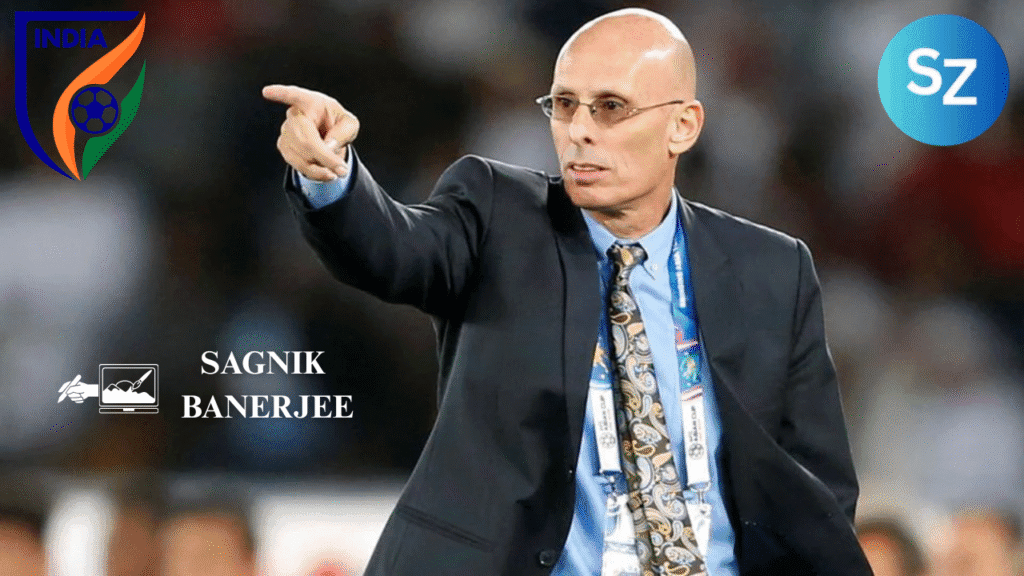
2019-2024: Stimac’s Tenure and Tactically Challenging Times
Former Croatian World Cupper Igor Štimac replaced Constantine in May 2019. Promising a more progressive, possession-based style, Štimac introduced fresh faces like Anirudh Thapa, Sahal Abdul Samad, and Liston Colaco.
Notable moments under Štimac:
- 2021 SAFF Championship Title win.
- Struggles in the 2022 World Cup Qualifiers (third in group).
- Draws against Qatar (2021) and Afghanistan, reflecting both potential and inconsistency.
Stimac’s tenure ended in 2024 after India failed to qualify for the 2024 AFC Asian Cup knockout stages, raising questions about tactical incoherence and squad management.
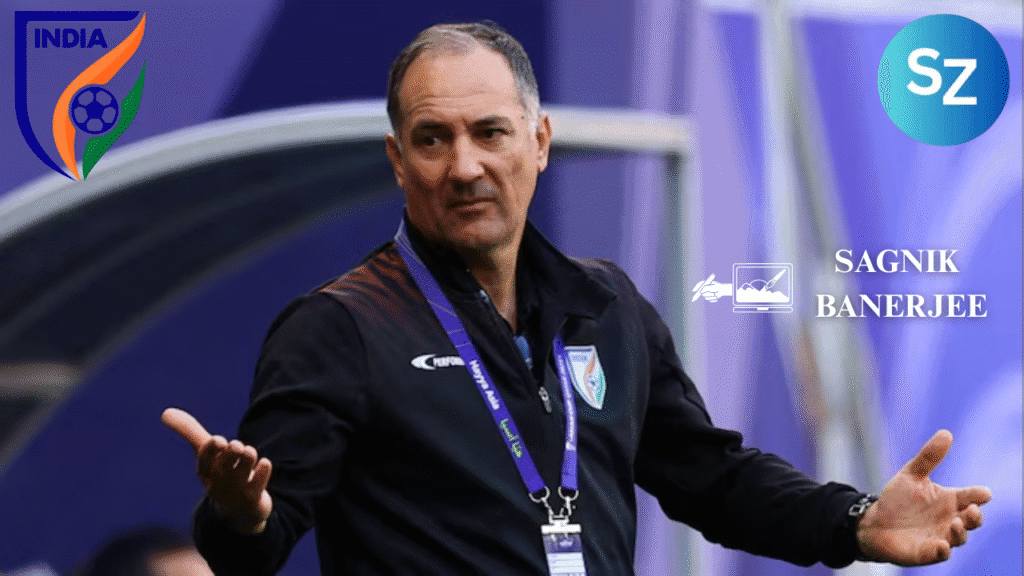
2023-2025: Marquez’s Methodical Stability
As interim boss turned head coach, Manolo Márquez, also manager of FC Goa, brought much-needed structure. While his stint was short-lived due to personal reasons, he:
- Promoted ISL talents like Nandhakumar Sekar and Parthib Gogoi.
- Focused on short-passing and pressing patterns.
- Helped India regain some attacking edge during the 2024 Hero Tri-Nation and friendlies.
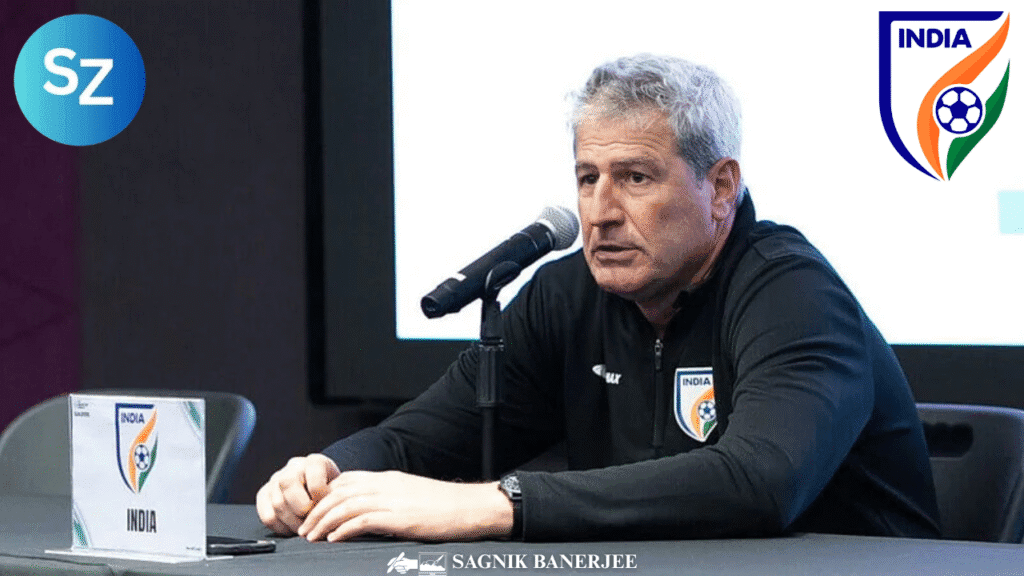
2025-Present: Khalid Jamil, the Homegrown Leader for India’s Next Chapter
On August 1, 2025, the All-India Football Federation (AIFF) appointed Khalid Ahmed Jamil as the head coach of India’s senior men’s national football team, a move that marked the first time in 13 years an Indian coach has taken charge full-time. Jamil becomes the first permanent Indian national team coach since Savio Medeira’s tenure in 2011-12.
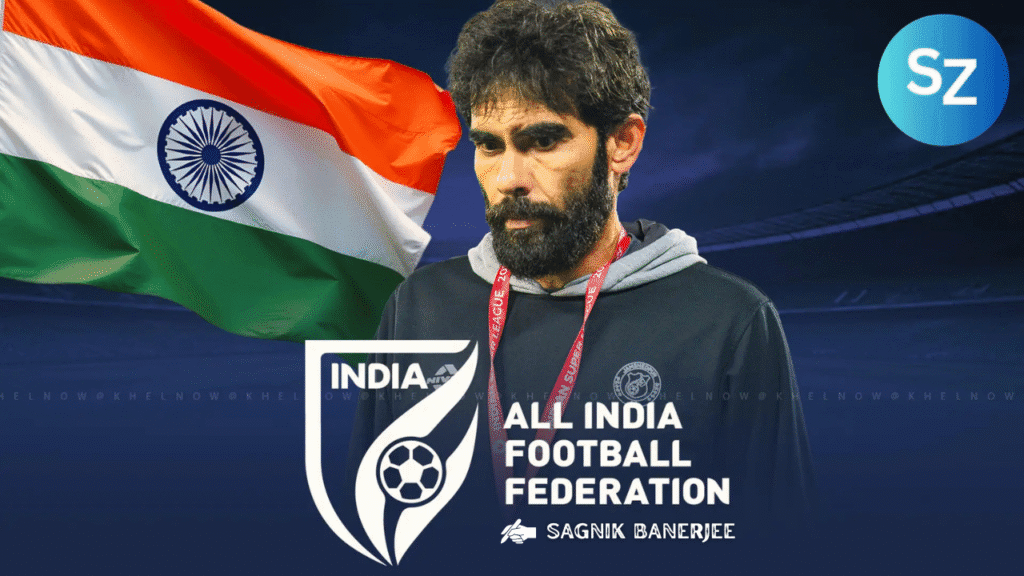
Youth and Philosophy
Jamil was born on April 21, 1977, in Kuwait City to Punjabi parents and began his playing career at Mahindra United in the year 1997, from where he was transferred to Air India and subsequently joined Mumbai FC. He was a combative midfielder and played 40 matches and scored 4 goals in international matches at the Indian national football team between 1998 and 2006 after which an injury ended his career in 2009.
Immediately Jamil kicked-start his managerial career by being in-charge of Mumbai FC (2009-16). He became popular in terms of tactical pragmatism and the capability to develop talent locally. His greatest accomplishment was made in 2017 when he took his club Aizawl FC to an unprecedented I-League triumph and against all odds, a success that has been termed as one of the greatest underdog stories in the history of Indian football.
He maintained his regular influence in the Indian Super League (ISL); as an interim and then permanent head coach at NorthEast United FC where he was the sole Indian coach to take an ISL franchise to a playoffs spot, and subsequently at Jamshedpur FC where he became the first Indian coach to lead an ISL team to the semifinals and a Super Cup final in the 2024-25 season.
Selection and Formation of Expectations
The AIFF increased the confidence in his domestic knowledge, beating Stephen Constantine, Stefan Tarkovic and others to the shortlist. The judgement was supported officially by the Technical Committee and the Executive Committee of the body and one of the reasons justifying the move was his acquaintance with several Indian players before other forthcoming competitions like the CAFA Nations Cup and the AFC Asian Cup qualifiers.
Jamil, aged 48, is AFC Pro License-certified and usually prefers the 4-2-3-1 formation with a focus on compact defence, quick counterattacks and nurturing Indians among the young talent.

Strategic Mandate
Jamil inherits a side ranked 133rd in the FIFA rankings, at a pivotal moment marked by inconsistent attacking output and recent coaching turnover. His key tasks would be:
- Reviving India’s goal-scoring, the national side struggled to find the net under the previous coach, scoring just five goals in eight matches and failing to score in their first three games of the latest campaign.
- Injecting tactical identity, drawing from his ISL playbook to build cohesion in transition and set-piece efficiency.
- Bridging local player development with national performance, leveraging his history in club-level talent cultivation.
With domestic confidence restored, Jamil begins his tenure keen to rewrite India’s football narrative; for a team at the crossroads, he represents continuity, cultural fit, and strategic clarity.
The Players: Pillars of the Past and Promise of the Future
Sunil Chhetri – he talisman of Indian football, retired in June 2024, only to return in January 2025 amidst India’s striker crises. With a staggering 95 international goals in 155 appearances, Chhetri stands:
- 3rd in all-time international goal scorers, only behind Cristiano Ronaldo (138) and Lionel Messi (112).
- India’s most-capped and highest-scoring player ever.
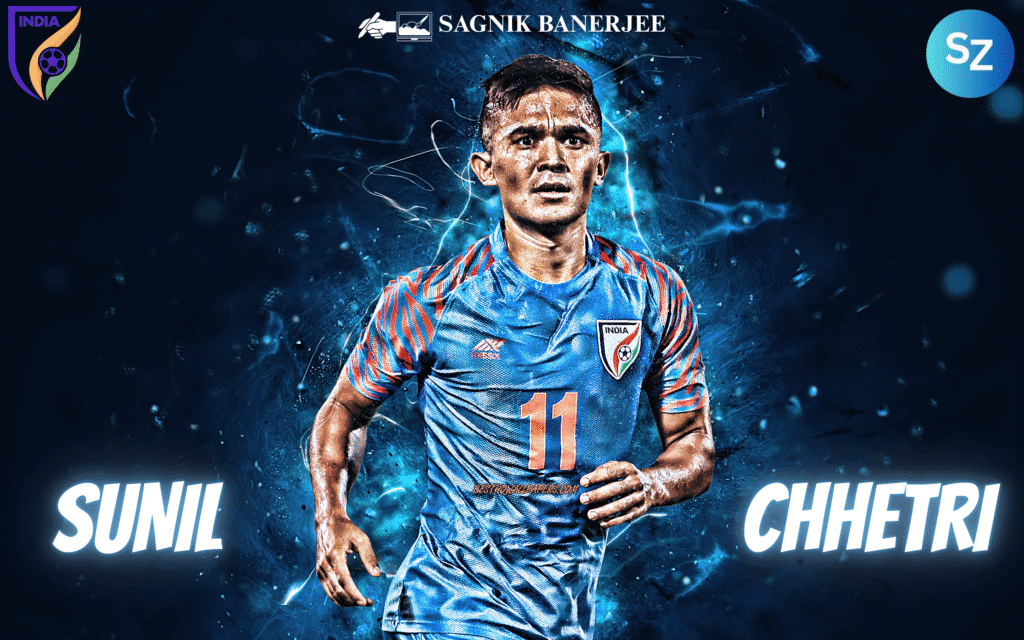
Sandesh Jhingan – The Defensive Wall
Current captain and central defender Sandesh Jhingan is the team’s backbone. A relentless presence in the backline, Jhingan has earned over 65 caps since his debut in 2015 and captains India with fierce commitment.
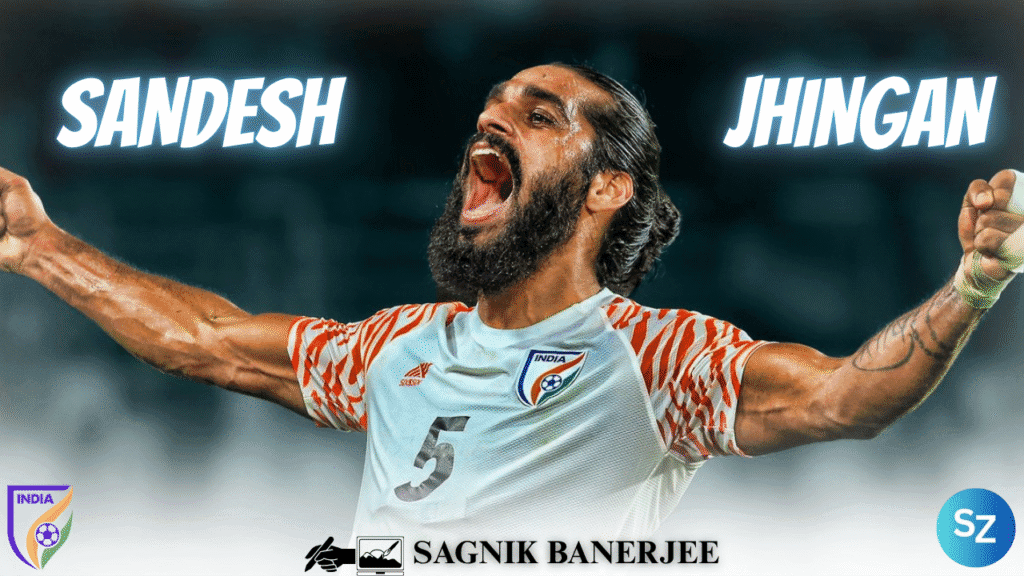
Emerging Stars to Watch:
- Jeakson Singh (CDM, East Bengal): India’s new midfield anchor.
- Vikram Pratap Singh (Winger, Mumbai City): Explosive in transition.
- Rahim Ali (Forward, Chennaiyin FC): Steady target man with 5 international goals.
- Parthib Gogoi (AM, NorthEast United): Technically gifted future playmaker.
Coaching Carousel: Strategic Shifts
| Coach | Tenure | Style | Highlights |
| Stephen Constantine | 2015-2019 | Counterattacking | 2019 AFC Asian Cup Qualification |
| Igor Stimac | 2019-2024 | Possession-based | 2021 SAFF Championship Win |
| Manolo Márquez | 2023-2025 | Spanish pressing system | Tri-Nation Series, 2024 |
| Khalid Jamil | 2025-Present | Compact & Flexible Tactics | Yet to Coach his Debut Game |
FIFA Rankings: A Rollercoaster Decade
| Year | FIFA Rank |
| 2015 | 166 |
| 2017 | 96 (Peak) |
| 2019 | 101 |
| 2022 | 106 |
| 2024 | 117 |
| 2025 | 133 |
India’s current position at 133 (as of August 2025) reflects the growing competitiveness in Asia and frequent transitions in coaching and tactics.
Infrastructure: Building the Foundations Amid Uncertainty
Super League Turmoil: ISL 2025–26 Season on Hold
A major jolt to the ecosystem came in mid‑2025, when the Indian Super League (ISL), the country’s top-tier domestic competition, was officially placed on hold. The pause came due to unresolved negotiations between AIFF and its commercial partner Football Sports Development Limited (FSDL) over the Master Rights Agreement (MRA), set to expire on December 8, 2025.
FSDL informed clubs that without contractual clarity post‑MRA expiry, it was unable to plan, organise or commercialise the 2025-26 season. AIFF confirmed that per a Supreme Court directive on April 26, 2025, it was legally restrained from renewing the deal until a court verdict, leading to current uncertainty.
The delay triggered operational crises: eight ISL clubs collectively appealed to AIFF for clarity; Odisha FC suspended all player and staff contracts from August 5, 2025, citing lack of season certainty, sponsorship shortfalls, and facility disruptions. AIFF has scheduled a meeting with club representatives in New Delhi on August 7, 2025, to resolve pending issues.
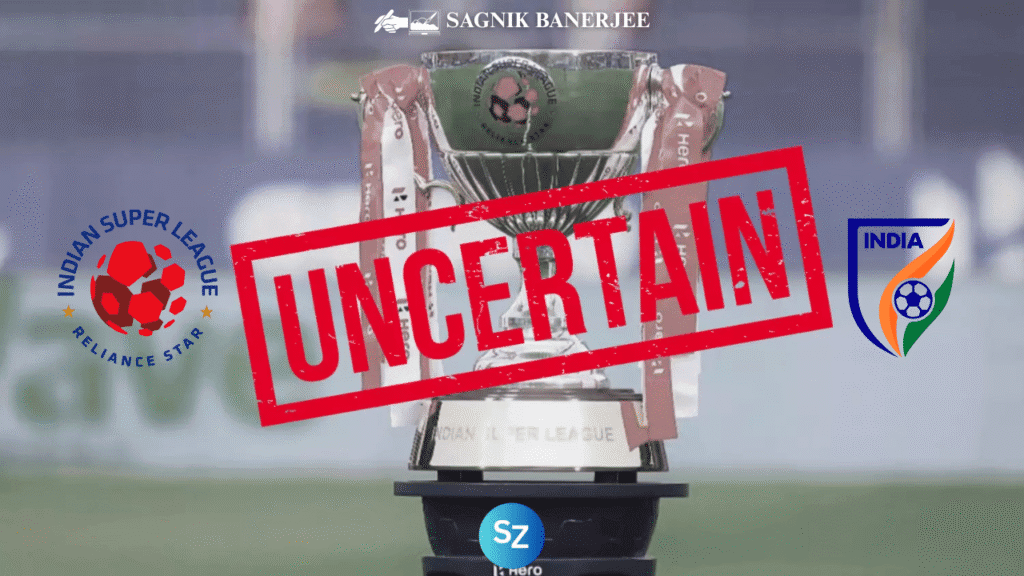
Training & Talent Development Facilities
Despite the league disruption, India has expanded its technical infrastructure in recent years:
- The AIFF National Centre of Excellence in Kolkata (Rajarhat, New Town) was initiated in 2018 with FIFA and AFC support. The initial phase includes:
- A two-storey Technical Centre with classrooms and dressing rooms.
- Floodlit artificial and natural turf training fields.
- India’s first rooftop pitch
so far completed; later phases include a stadium, coaching/referee education facilities, medical and sports-science centers.
- State-of-the-art stadiums such as EKA Arena by TransStadia in Ahmedabad (capacity ~20,000) and Greenfield International Stadium in Thiruvananthapuram (50,000 seats, eco-friendly design, Olympic standard supporting infrastructure) serve as modern venues that meet FIFA’s technical standards.
- Established venues like Jawaharlal Nehru Stadium (Kochi) and Fatorda Stadium (Margao) continue to host international matches, ISL and national-team fixtures, equipped with broadcast-quality lighting, hybrid pitches, and media facilities.
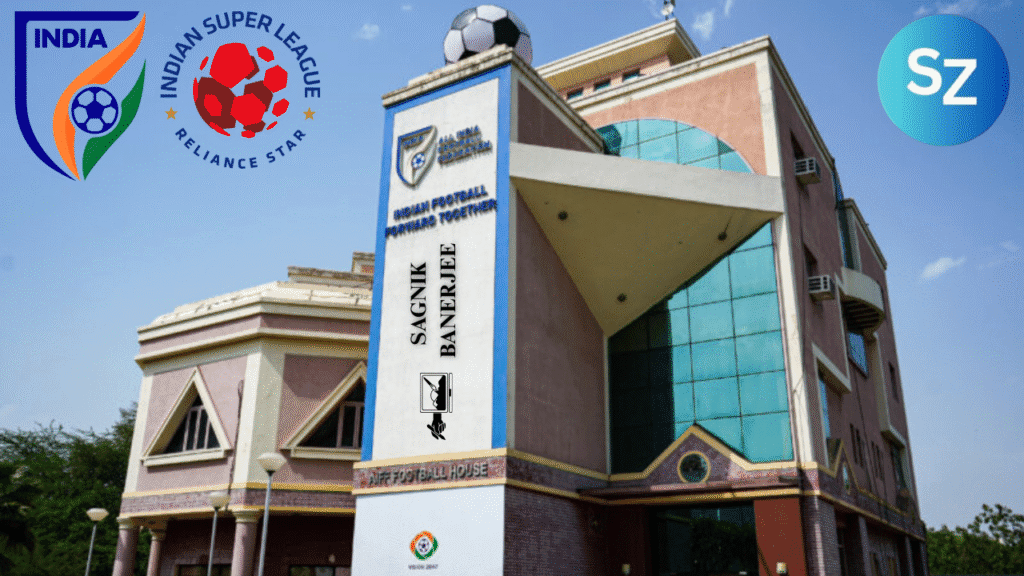
Grassroots & Women Football Development
AIFF along with FIFA and Telangana Government announced the opening of the first FIFA Talent Academy for girls in Hyderabad in 2025, a move towards excelling in respect to Vision 2047. It offers elite training, residential, medical, and educational support all year round to girls belonging to the U-16 and boys to the age group of U-14 to reinforce national talent pipelines.
Meanwhile, the terms of quality training are being opened by personal academies like the Odisha FC residential football centre and the Rajasthan United FC residential football centre. The latter launched a fully-fledged residential academy in Jaipur in July 2025, retrenching its local development aspirations.
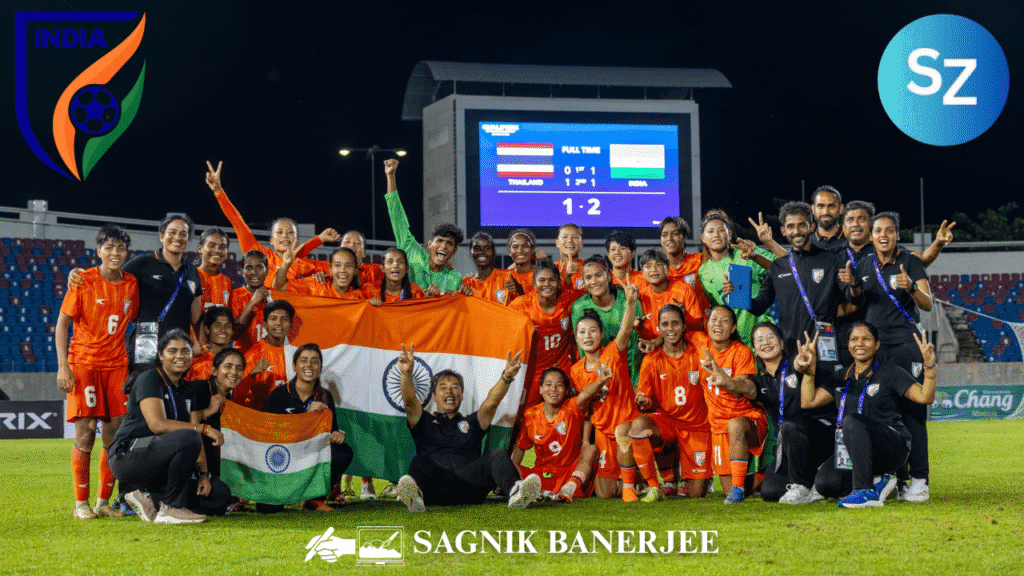
Outlook
Football infrastructure in India has gradually improved with several training facilities, FIFA encouraged academies, and world class stadiums; however, the administrative backlogs are a threat of losing the drive. The ISL scandal reveals structural weakness and there is doubt about AIFF sustaining its own Vision 2047 blueprint. Going ahead, it will be indispensable to create transparency around the superior competitions like the same amount of money is spent on the facilities.
Vision 2047: India’s Long-Term Roadmap
In January 2023, AIFF launched Vision 2047, a strategic blueprint to make India a top 10 footballing nation in Asia by the 100th year of independence.
Key Pillars:
- 50,000 registered coaches by 2030.
- Grassroots engagement with 35 million school children.
- At least 3,000 active professional players.
- Boosting women’s football, futsal, and para-football.
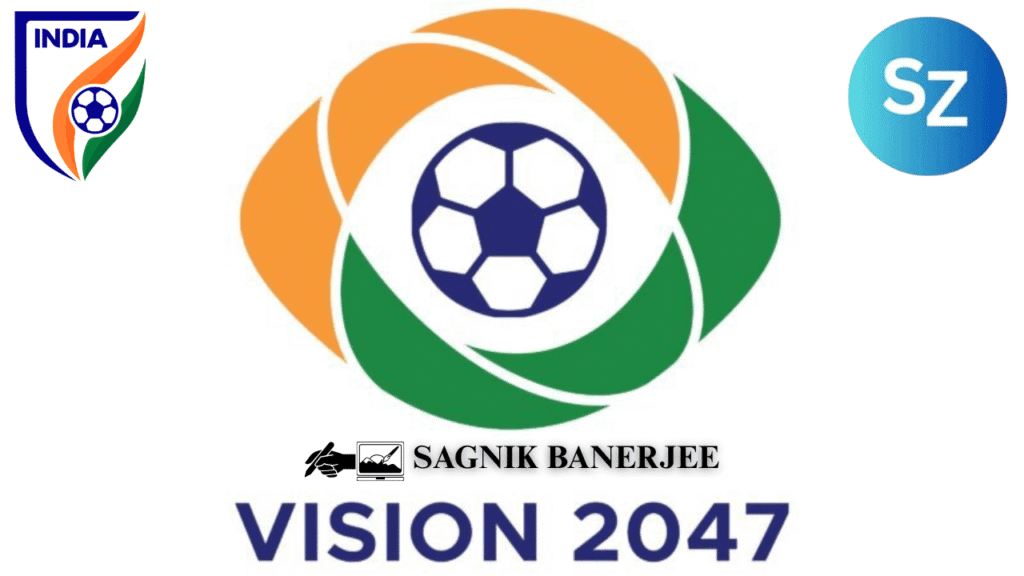
Honours and Tournament Performances (2015-2025)
| Tournament | Best Result (2015-2025) |
| AFC Asian Cup | Group Stage (2019, 2023) |
| SAFF Championship | Winners (2015, 2021) |
| Intercontinental Cup | Winners (2018, 2023) |
| Hero Tri-Nation Series | Winners (2024) |
| King’s Cup | Runners-up (2019) |
While continental success has eluded India, regional dominance in the SAFF region remains intact.
Statistical Overview
Top Indian Goalscorers (All-Time):
- Sunil Chhetri – 95 Goals
- Bhaichung Bhutia – 42 Goals
- IM Vijayan – 39 Goals
Most Caps:
- Sunil Chhetri – 155 Caps
- Bhaichung Bhutia – 107 Caps
- IM Vijayan – 88 Caps
India’s 2025 Match Summary (So Far):
- India 3-0 Maldives (March)
- India 0-0 Bangladesh (March)
- India 0-2 Thailand (June)
- India 0-1 Hong Kong (June)
India’s Upcoming Matches in 2025:
- India vs Singapore (October)
- Singapore vs India (October)
- Bangladesh vs India (November)
Progressing In Future: Problems And Opportunities
Key Challenges:
- Surplus goals not scored after Chhetri.
- Tactical unpredictability caused by changes of coaches.
- FIFA ranking decline due to performances declines.
Silver Linings:
- Increasing popularity with the fans, particularly in Northeast and Kerala.
- ISL / I-league Youth Development synergy.
- The strategic roadmap of AIFF provides clarity at the institutional level.
Kicking Toward 2047: How Indian Football Is Rebuilding After a Tumultuous Decade?
Over the past decade (2015-2025), Indian football has been made to undergo a precarious transitional process. Indian football has already taken its first leap with a new generation being produced through local leadership with the likes of Sunil Chhetri becoming a legend and achieving international standards, the next step is here to be taken. Nonetheless, such a jump will require strategic restraint, grassroot investment, and fan-based support. With the prospect of Vision 2047 being true, the next decade could transform the Indian footballing future at the international level.

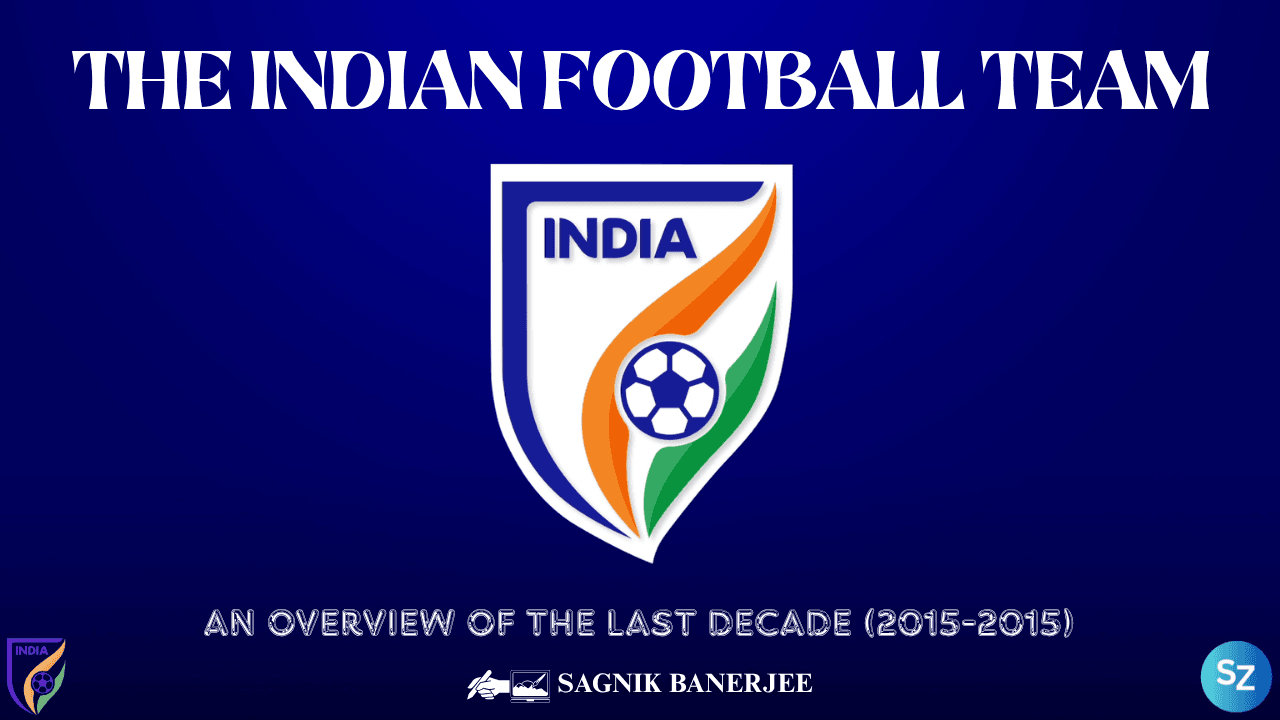
[…] Indian football holds its breath for revival, this dual storyline, i.e., the champions’ consolidation and the […]